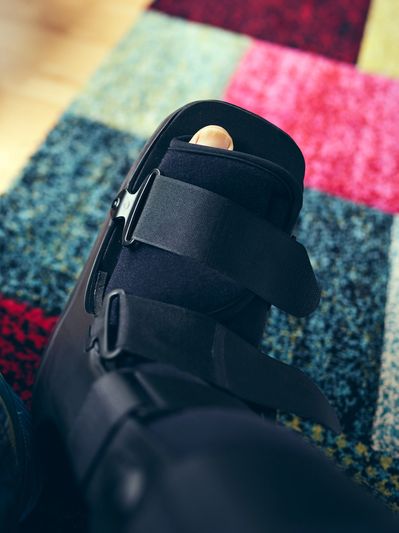Foot Fractures
Educational Information
Foot fractures are a common type of injury, affecting both adults and children. The symptoms of a foot fracture include pain, swelling, bruising, and difficulty walking. The most common causes of foot fractures include trauma, such as a fall or a direct impact to the foot, and osteoporosis, which weakens the bones and makes them more susceptible to fractures. Diagnosis of a foot fracture typically involves a physical examination, X-rays, and sometimes a CT scan.
Treatment options for foot fractures can vary depending on the type and severity of the fracture, but they often involve immobilization with a cast or brace, physical therapy, and medication to manage pain and swelling. In severe cases, surgery may be necessary to repair the damaged bone. In addition, orthopedic devices such as shoes or inserts can be used to provide extra support and protection for the foot. It is important for individuals with foot fractures to follow a proper rehabilitation plan to ensure a successful recovery and prevent future injury.

Ankle Fractures
Educational Information:
Ankle fractures are a common type of injury, affecting approximately 1 in every 1,000 people each year. The most common symptoms of an ankle fracture include pain, swelling, bruising, and difficulty walking. The most common causes of ankle fractures are trauma, such as a fall from a height or a twist injury, and osteoporosis, which can weaken the bones and make them more susceptible to fractures.
Diagnosis of an ankle fracture typically involves a physical examination by a foot and ankle specialist, X-rays, and sometimes a CT scan.
Treatment options for ankle fractures can vary depending on the type and severity of the fracture, but they often involve immobilization with a cast or brace, physical therapy, and medication to manage pain and swelling. In severe cases, surgery may be necessary to repair the damaged bone.

Contact Us
Contact Us
Better yet, see us in person!
The Sonoran Foot and Ankle Institute
2308 North Rosemont Boulevard, Tucson, Arizona 85712, United States
Hours
Open today | 09:00 am – 05:00 pm |
This website uses cookies.
We use cookies to analyze website traffic and optimize your website experience. By accepting our use of cookies, your data will be aggregated with all other user data.
